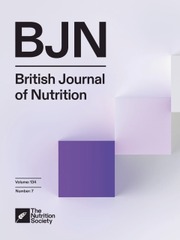No CrossRef data available.
Article contents
Meat intake and type 2 diabetes among Japanese workers: a prospective study
Published online by Cambridge University Press: 23 September 2024
Abstract
Red meat and processed meat intake has been linked to increased risk of type 2 diabetes; however, evidence from Asia is limited and inconsistent. We prospectively examined the association of intake of total meat and its subtype with type 2 diabetes in a Japanese working population. Participants were 2709 workers aged 18–78 years who reported no history of diabetes when they responded to a health survey for the first time between 2012 and 2019. Dietary intake was assessed using a validated self-administered diet history questionnaire. The incidence of type 2 diabetes was assessed via annual health checkups from baseline through March 2023. Type 2 diabetes was defined as fasting blood glucose ≥ 126 mg/dl, casual blood glucose ≥ 200 mg/dl, HbA1c ≥ 6·5 %, self-report of diabetes or current use of anti-diabetic drugs. Hazard ratios according to tertile of meat intake were estimated using Cox proportional hazards regression. During 16 119 person-years of follow-up, 135 (5·0 %) workers developed type 2 diabetes. Intakes of total meat, red meat, processed meat and poultry were not associated with risk of type 2 diabetes. After adjustment for covariates, hazard ratios for the highest v. lowest tertile of meat intake were 1·01 (95 % CI 0·63, 1·62) for total meat, 1·02 (95 % CI 0·66, 1·58) for red meat, 0·99 (95 % CI 0·65, 1·49) for processed meat and 1·13 (95 % CI 0·71, 1·80) for poultry. Our findings suggest that meat intake is not associated with the risk of type 2 diabetes among Japanese workers.
- Type
- Research Article
- Information
- Copyright
- © The Author(s), 2024. Published by Cambridge University Press on behalf of The Nutrition Society



